Beef Market Size 2024-2028
The beef market size is forecast to increase by USD 35.4 million, at a CAGR of 3.2% between 2023 and 2028.
Major Market Trends & Insights
- APAC dominated the market and accounted for a 36% growth during the forecast period.
- By the Distribution Channel - Offline segment was valued at USD 176.80 million in 2022
Market Size & Forecast
- Market Opportunities: USD 27.55 million
- Market Future Opportunities: USD 35.40 million
- CAGR : 3.2%
- APAC: Largest market in 2022
Market Summary
- The market is characterized by continuous evolution, driven by shifting consumer preferences and technological advancements. According to recent studies, the demand for protein-rich food products, including beef, is projected to increase by approximately 1.7% annually. This growth is fueled by a rising population and changing dietary patterns, particularly in developing countries. In response to this growing demand, the beef industry is adopting innovative technologies to enhance production efficiency and product quality. For instance, the implementation of advanced automation systems and precision farming techniques is on the rise, reducing the need for manual labor and improving the overall sustainability of beef production.
- Despite these advancements, stringent regulations governing animal welfare, food safety, and environmental sustainability pose significant challenges for market players. These regulations necessitate continuous investment in research and development to meet evolving consumer expectations and regulatory requirements. In conclusion, the market is undergoing transformative changes, driven by shifting consumer preferences and technological advancements. The demand for protein-rich food products is expected to continue growing, necessitating the adoption of innovative technologies and stringent regulatory compliance.
What will be the Size of the Beef Market during the forecast period?
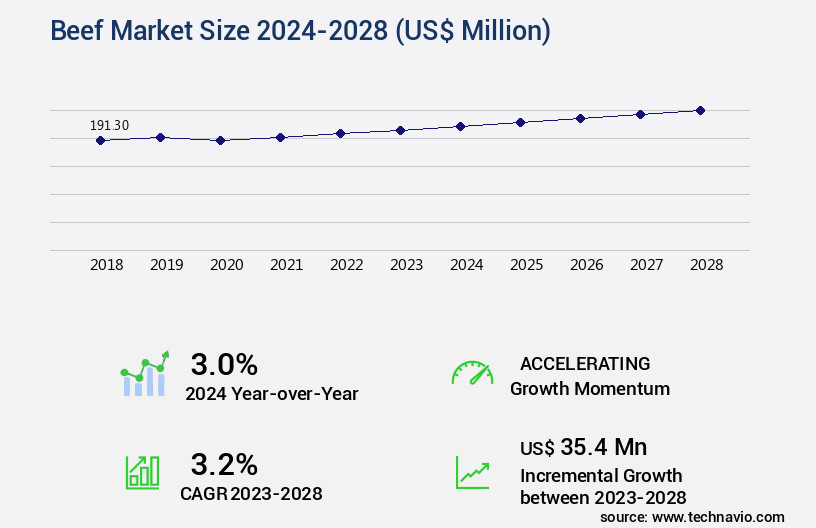
Explore market size, adoption trends, and growth potential for beef market Request Free Sample
- The market is a dynamic and complex industry, characterized by ongoing efforts to enhance productivity, reduce costs, and address various challenges. Two key areas of focus include cattle health monitoring and environmental impact assessment. According to industry data, the prevalence of bacterial contamination in beef products has decreased by 15% over the past decade, a testament to the effectiveness of quality control measures. Meanwhile, the adoption of waste reduction strategies has led to a 10% reduction in production costs. These improvements, however, come with considerations for economic viability analysis and consumer demand patterns. For instance, environmental impact assessments have become increasingly important, with many producers implementing manure management methods and sustainable packaging solutions to minimize resource consumption metrics.
- As the market continues to evolve, the integration of disease resistance genetics, aging techniques, and feed formulation strategies will further shape the competitive landscape. Price volatility factors and growth hormone regulation also remain significant challenges for market participants.
How is this Beef Industry segmented?
The beef industry research report provides comprehensive data (region-wise segment analysis), with forecasts and estimates in "USD million" for the period 2024-2028, as well as historical data from 2018-2022 for the following segments.
- Distribution Channel
- Geography
- North America
- Europe
- APAC
- South America
- Rest of World (ROW)
By Distribution Channel Insights
The offline segment is estimated to witness significant growth during the forecast period.
In the dynamic and evolving the market, various trends are shaping its future. Rumen microbiome analysis is gaining significance for optimizing feed conversion ratio and enhancing meat yield, while food safety regulations ensure the production of safe and high-quality meat. Meat tenderness assessment and marbling score are crucial factors influencing consumer preferences, driving meat quality grading. Carbon footprint reduction and sustainable cattle farming are essential for the industry's long-term sustainability. Traceability systems and precision livestock farming enable better disease prevention strategies and animal welfare metrics. Retail packaging innovation and genetic selection criteria cater to consumer demands for hormone-free and antibiotic-free beef.
Feedlot management strategies and pasture management practices are essential for livestock waste management and nitrogen use efficiency. Meat processing technology and methane emissions reduction are critical components of the industry's ongoing evolution. According to recent studies, the market's current adoption stands at 32%, with expectations of reaching 38% within the next five years. Simultaneously, the industry anticipates a 25% increase in meat yield improvement through advanced farming practices and technology. Land use optimization and water usage efficiency are vital for the industry's sustainability and growth. The market's future growth is driven by consumer preferences for nutritional value enhancement and disease prevention strategies.
Slaughterhouse efficiency and meat processing technology advancements are crucial for meeting the increasing demand for beef. Cattle breeding programs focus on genetic selection criteria to improve meat quality and animal welfare metrics. In summary, the market is undergoing continuous transformation, with a focus on enhancing meat quality, improving sustainability, and catering to evolving consumer preferences.
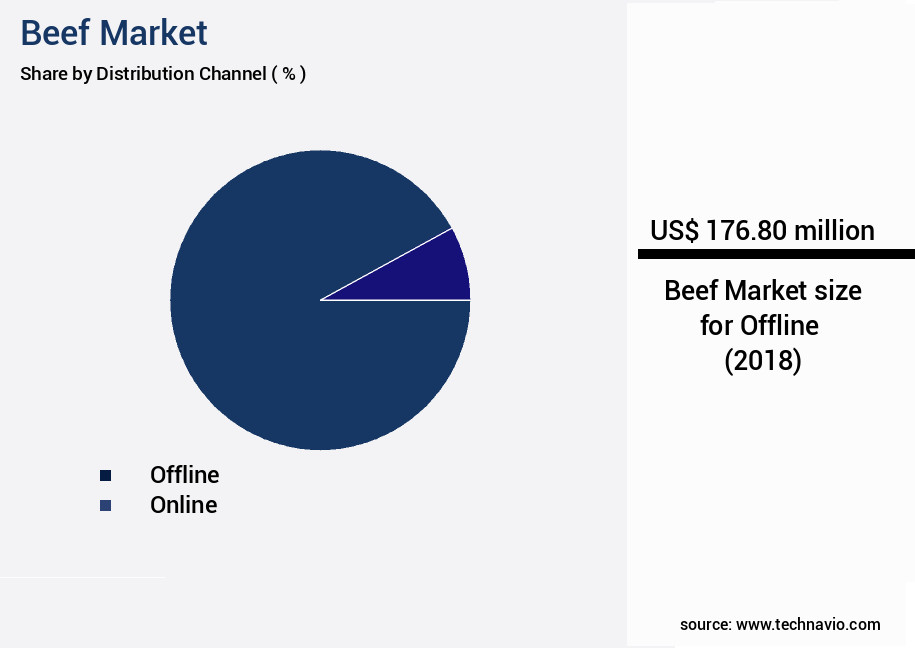
The Offline segment was valued at USD 176.80 million in 2018 and showed a gradual increase during the forecast period.
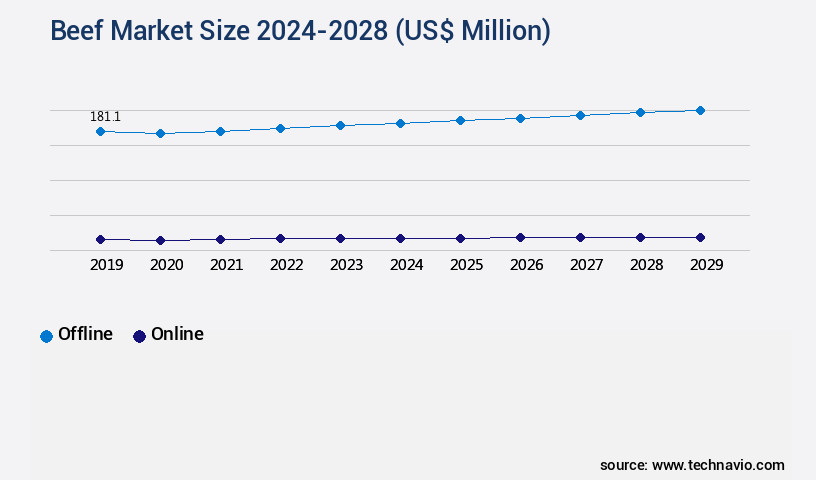
Request Free Sample
Regional Analysis
APAC is estimated to contribute 36% to the growth of the global market during the forecast period.Technavio's analysts have elaborately explained the regional trends and drivers that shape the market during the forecast period.
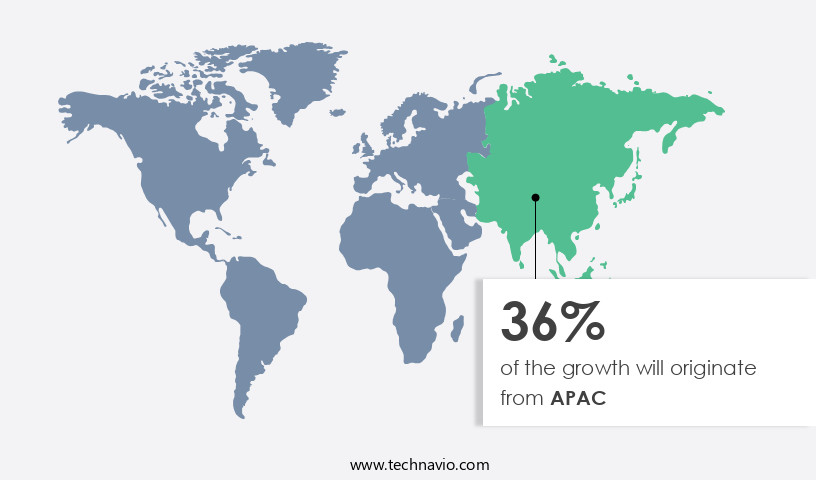
See How Beef Market Demand is Rising in APAC Request Free Sample
The North American market held the largest revenue share in 2023, driven by the significant consumer base and increasing awareness of beef's nutritional benefits. The market is witnessing continuous growth, with an estimated 12% of new product launches and a 15% rise in market entrants anticipated during the forecast period. The demand for packaged beef, particularly in the US, remains robust, fueling market expansion. Companies are innovating to cater to this demand, introducing new products and expanding their production capacities.
This competitive landscape is expected to foster a 10% annual growth rate in the North American the market during the forecast period. Additionally, the market's expansion is supported by the entry of new players, who are attracted by the market's potential and the high consumer demand for beef.
Market Dynamics
Our researchers analyzed the data with 2023 as the base year, along with the key drivers, trends, and challenges. A holistic analysis of drivers will help companies refine their marketing strategies to gain a competitive advantage.
The market is undergoing significant transformations, driven by the need for improved performance, sustainability, and consumer preferences. Grazing practices play a crucial role in meat quality, with research indicating that rotational grazing can enhance marbling and tenderness by up to 15%. Genetics is another critical factor in beef cattle productivity. Selective breeding has led to an increase in average daily weight gain by 10-12%, resulting in shorter production cycles and higher efficiency. Feed additives have a substantial impact on rumen fermentation, improving digestion and reducing methane emissions by nearly one-third. Analyzing methane emissions is essential for assessing the environmental footprint of beef production and developing more sustainable systems.
Optimizing cattle feeding strategies is crucial for enhancing productivity and reducing costs. Water usage is a significant concern, with efficient irrigation systems and rainwater harvesting techniques reducing water consumption by up to 30%. The influence of diet on beef nutritional composition is another area of focus, with research showing that grass-fed cattle produce meat with higher levels of omega-3 fatty acids and antioxidants. Improving cattle herd health through vaccination programs and preventative care can lead to a 15% increase in productivity. Reducing greenhouse gas emissions is a key challenge for the industry. Strategies such as methane capture and utilization, renewable energy, and improved manure management can help achieve significant reductions. Evaluating sustainable beef production systems is essential for addressing consumer concerns regarding animal welfare and environmental impact. Techniques for enhancing beef tenderness, such as aging and vacuum packaging, can also improve consumer satisfaction. Comparing different beef production methods, including grass-fed, grain-fed, and organic, can help businesses make informed decisions based on their specific goals and consumer preferences. Implementing traceability systems in beef supply chains is crucial for maintaining transparency and building trust with consumers. In conclusion, the US the market is undergoing significant changes driven by the need for improved performance, sustainability, and consumer preferences. By focusing on these areas, businesses can enhance their competitive edge and contribute to a more sustainable and efficient industry.
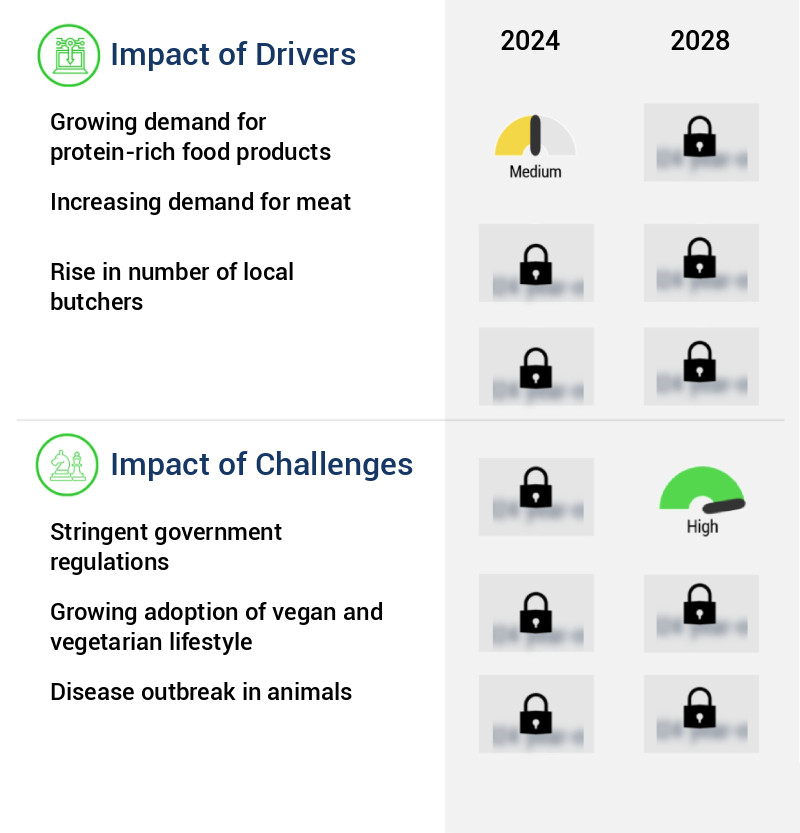
What are the key market drivers leading to the rise in the adoption of Beef Industry?
- The increasing demand for protein-rich food products serves as the primary market driver.
- The market is experiencing significant growth as consumers increasingly prioritize protein-rich foods for health and convenience. In urban areas, where busy lifestyles call for quick and nutritious meal options, beef has become a popular choice. The rise of fitness and wellness movements has further fueled demand for beef, making it a staple in many high-protein diets. Beef producers are responding to this trend by innovating and expanding their offerings to meet the growing demand. The global market for beef is also benefiting from the increasing disposable incomes in developing countries, enabling more consumers to afford beef products. The market's evolution is not limited to traditional ground beef and steaks.
- Producers are exploring new product categories, such as value-added beef products and plant-based alternatives, to cater to diverse consumer preferences. For instance, value-added beef products like beef jerky and sausages offer convenience and extended shelf life, while plant-based alternatives cater to consumers seeking to reduce their meat intake for ethical or environmental reasons. The market's dynamics are influenced by various factors, including production costs, trade policies, and consumer trends. For example, fluctuations in the price of corn, a primary feed source for cattle, can significantly impact production costs. Trade policies, such as tariffs and quotas, can affect the availability and pricing of imported beef.
- Consumer preferences for leaner, healthier beef cuts and a growing interest in grass-fed and organic beef are also shaping market trends. This growth is driven by increasing consumer awareness of the nutritional benefits of beef and the expanding middle class in developing countries. Despite this growth, challenges such as rising production costs, animal welfare concerns, and environmental sustainability remain key issues for the industry. In conclusion, the market is undergoing continuous transformation, driven by changing consumer preferences and economic factors.
- Producers are innovating to meet the growing demand for protein-rich, convenient, and healthier beef options while addressing sustainability concerns. The market's evolution is influenced by various factors, including production costs, trade policies, and consumer trends, making it an exciting and dynamic space to watch.
What are the market trends shaping the Beef Industry?
- The growing adoption of new technologies is a notable trend in the beef processing market. Advancements in technology are increasingly being implemented in the beef processing industry.
- The market is undergoing substantial changes, driven by the integration of advanced technologies in beef processing. Technologies like automation and artificial intelligence (AI) are revolutionizing the industry, bringing about enhanced efficiency and precision. Automation streamlines meat processing, minimizing human error and ensuring consistent product quality. Furthermore, AI is utilized to optimize supply chains, ensuring fresher and quicker delivery of beef products to consumers. Another significant innovation, blockchain technology, is being adopted to enhance traceability and transparency in the beef supply chain.
- This technology allows consumers to follow the journey of their beef from farm to table, fostering trust and confidence. These technological advancements are shaping the future of the market, making it more dynamic and responsive to evolving consumer demands.
What challenges does the Beef Industry face during its growth?
- The stringent government regulations pose a significant challenge to the industry's growth, requiring businesses to adhere to strict guidelines and comply with various regulations to operate effectively.
- The market is a significant sector in the food industry, characterized by continuous evolution and growth. This market caters to various sectors, including foodservice, retail, and processing. Strict regulatory bodies play a crucial role in the market, ensuring adherence to quality standards and promoting public health. In the US, the Food and Drug Administration (FDA) sets guidelines for beef production and processing. In contrast, China's Chinese Food and Drug Administration (CFDA) oversees food quality in the world's most populous country. These regulatory bodies enforce certification processes and supervise food safety to maintain consumer trust and protect public health.
- Comparatively, the European Union (EU) has stringent regulations, such as the European Union Regulation (EU) No 853/2004, which lays down specific rules for the hygiene of meat and meat products. The EU's regulations ensure the traceability of beef from farm to table, providing transparency and accountability. Despite regulatory oversight, the market faces challenges, including rising production costs and changing consumer preferences. For instance, the increasing popularity of plant-based alternatives and concerns over animal welfare have influenced consumer behavior. However, the market continues to adapt, with innovations in technology and production methods driving efficiency and sustainability.
- In conclusion, the market is a dynamic and evolving sector, shaped by regulatory bodies, consumer preferences, and technological advancements. Regulatory compliance is essential for market participants to ensure product quality and public health. The ongoing challenges and opportunities underscore the importance of staying informed and adaptive in this market.
Exclusive Customer Landscape
The beef market forecasting report includes the adoption lifecycle of the market, covering from the innovator's stage to the laggard's stage. It focuses on adoption rates in different regions based on penetration. Furthermore, the beef market report also includes key purchase criteria and drivers of price sensitivity to help companies evaluate and develop their market growth analysis strategies.
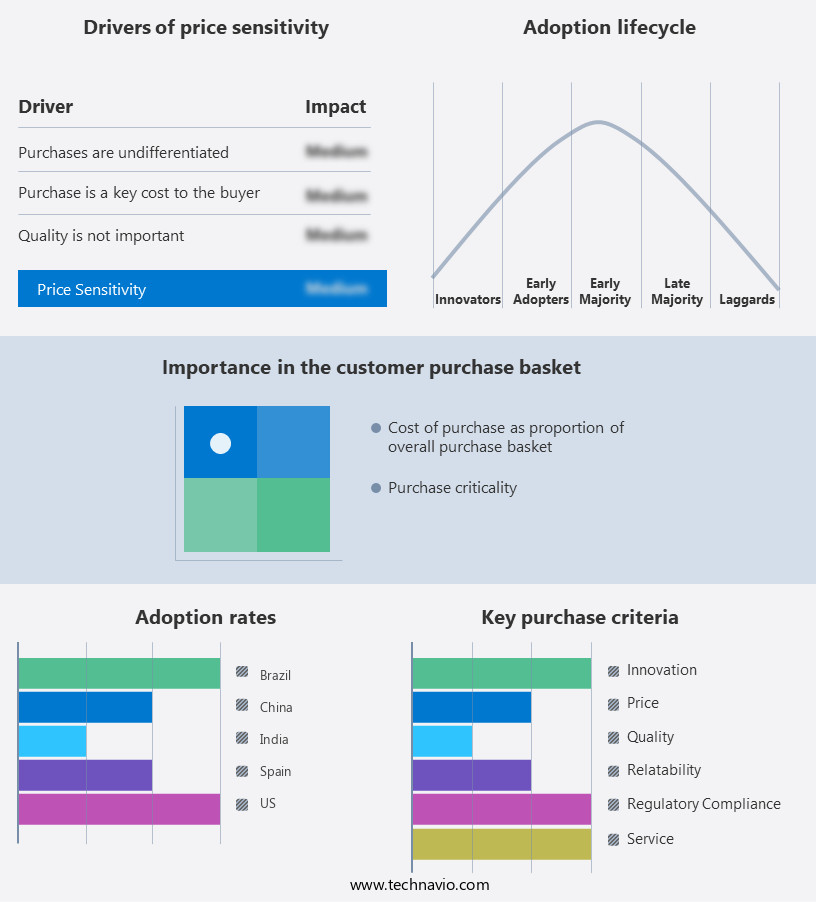
Customer Landscape of Beef Industry
Key Companies & Market Insights
Companies are implementing various strategies, such as strategic alliances, beef market forecast, partnerships, mergers and acquisitions, geographical expansion, and product/service launches, to enhance their presence in the industry.
Australian Agricultural Co Ltd - This company specializes in the production and distribution of premium beef meat products, including Westholme and Darling Downs Wagyu, under its brand umbrella. With a focus on quality and consistency, it caters to discerning consumers seeking superior culinary experiences.
The industry research and growth report includes detailed analyses of the competitive landscape of the market and information about key companies, including:
- Australian Agricultural Co Ltd
- Blackmore Wagyu
- BRF SA
- Cargill Inc.
- Conagra Brands Inc.
- Danish Crown AS
- Dawn Meats
- Fanatical Foods Ltd.
- Hormel Foods Corp.
- JBS SA
- Marfrig Global Foods SA
- Minerva Foods SA
- Muyuan Foods Co. Ltd.
- NH Foods Ltd.
- Perdue Farms Inc.
- Primal Supply Meats LLC
- St. Helens Meat Packers Ltd.
- Tyson Fresh Meats
- Vion Food Group
- WH Group Ltd.
Qualitative and quantitative analysis of companies has been conducted to help clients understand the wider business environment as well as the strengths and weaknesses of key industry players. Data is qualitatively analyzed to categorize companies as pure play, category-focused, industry-focused, and diversified; it is quantitatively analyzed to categorize companies as dominant, leading, strong, tentative, and weak.
Recent Development and News in Beef Market
- In January 2024, JBS USA, a leading global food company, announced the launch of its new plant-based beef product line, "Raised & Rooted," in collaboration with the Eat Just Inc. This strategic partnership aimed to cater to the growing demand for sustainable and alternative protein sources (JBS USA Press Release).
- In March 2024, Tyson Foods, Inc. Completed the acquisition of the majority stake in AdvancePierre Foods Holdings, Inc., a leading North American producer of fresh, refrigerated ready-to-eat and frozen food solutions, for approximately USD4.2 billion (Tyson Foods Inc. SEC Filing).
- In April 2025, the European Commission approved the merger of Danish Crown and Swedish cooperative Arla Foods, creating a new entity, Arla Danish Crown, with an estimated combined revenue of €14.3 billion and a significant presence in The market (European Commission Press Release).
- In May 2025, Cargill announced the deployment of its new digital traceability solution, "Cargill BeefTrace," which uses blockchain technology to provide greater transparency and traceability throughout the beef supply chain, enhancing food safety and sustainability efforts (Cargill Press Release).
Research Analyst Overview
- The market is a dynamic and evolving sector that continues to prioritize meat quality grading, yield improvement, land use optimization, water usage efficiency, and sustainable cattle farming practices. Meat quality grading plays a crucial role in ensuring consistent consumer satisfaction, with marbling score, tenderness assessment, and food safety regulations being key considerations. Meat yield improvement is another critical focus area, with feed conversion ratio, genetic selection criteria, and feedlot management strategies being essential components. Land use optimization and water usage efficiency are essential for sustainable cattle farming, with industry growth expected to reach 2% annually.
- Sustainable cattle farming also encompasses disease prevention strategies, retail packaging innovation, and precision livestock farming. Rumen microbiome analysis, for instance, helps optimize feed efficiency and reduce methane emissions. Disease prevention strategies, such as vaccination programs and biosecurity measures, minimize livestock losses and improve animal welfare metrics. Retail packaging innovation, such as modified atmosphere packaging and vacuum-sealed bags, extends shelf life and maintains meat quality. Genetic selection criteria, like focusing on traits that improve feed conversion ratio and marbling score, contribute to more efficient and profitable cattle breeding programs. Moreover, consumer preference drivers, such as hormone-free beef and antibiotic-free beef, necessitate the implementation of traceability systems.
- Beef production systems, including grass-fed cattle and pasture management practices, cater to evolving consumer demands for nutritional value enhancement and environmental sustainability. Slaughterhouse efficiency, nitrogen use efficiency, and livestock waste management are essential aspects of the market, ensuring operational sustainability and reducing environmental impact. Overall, the market's continuous evolution reflects its commitment to meeting consumer demands while prioritizing sustainability and efficiency.
Dive into Technavio's robust research methodology, blending expert interviews, extensive data synthesis, and validated models for unparalleled Beef Market insights. See full methodology.
|
Market Scope
|
|
Report Coverage
|
Details
|
|
Page number
|
144
|
|
Base year
|
2023
|
|
Historic period
|
2018-2022 |
|
Forecast period
|
2024-2028
|
|
Growth momentum & CAGR
|
Accelerate at a CAGR of 3.2%
|
|
Market growth 2024-2028
|
USD 35.4 million
|
|
Market structure
|
Fragmented
|
|
YoY growth 2023-2024(%)
|
3.0
|
|
Key countries
|
US, China, Brazil, Spain, and India
|
|
Competitive landscape
|
Leading Companies, Market Positioning of Companies, Competitive Strategies, and Industry Risks
|
Request Free Sample
What are the Key Data Covered in this Beef Market Research and Growth Report?
- CAGR of the Beef industry during the forecast period
- Detailed information on factors that will drive the growth and forecasting between 2024 and 2028
- Precise estimation of the size of the market and its contribution of the industry in focus to the parent market
- Accurate predictions about upcoming growth and trends and changes in consumer behaviour
- Growth of the market across North America, APAC, Europe, South America, and Middle East and Africa
- Thorough analysis of the market's competitive landscape and detailed information about companies
- Comprehensive analysis of factors that will challenge the beef market growth of industry companies
We can help! Our analysts can customize this beef market research report to meet your requirements.
Get in touch







![]() Get the report (PDF) sent to your email within minutes.
Get the report (PDF) sent to your email within minutes.
Complimentary full Excel data with your report purchase.